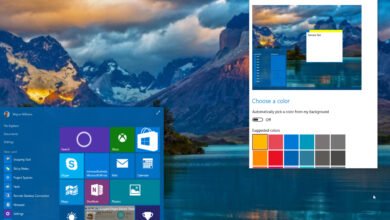The Ultimate Guide to High-Speed Internet

Do you want to learn more about high-speed internet? Are you curious to know what it is and how it works? This ultimate guide is here to answer all your questions.
High-speed internet, also known as broadband, refers to an internet connection with faster download and upload speeds than a standard dial-up connection. It typically consists of fiber optic cables that allow faster data transmission speeds for uploading and downloading files. Broadband service can be delivered through various access technologies, such as digital subscriber lines (DSL), cable modems, or satellite connections.
Read More: How to Protect Yourself Against Hackers: Internet Safety
Benefits of High-Speed Internet
High-speed internet has become a necessity in today’s world. Unsurprisingly, many households are looking for the most reliable and cost-effective options to get the best deal on high-speed internet. A fast connection allows users to browse web pages quicker, stream movies and music without buffering, download large files faster, and engage in online gaming with less lag time. Additionally, high-speed internet offers secure access to email accounts, bank accounts, or other sensitive information without worrying about security threats. With larger bandwidths available through high-speed connections, more devices can be connected simultaneously with minimal slowdowns or interference from outside sources.
Types of High-Speed Internet
High-speed internet has become a necessity for modern-day living. Its ability to provide quick, reliable connection speeds makes it the perfect solution for anyone who needs fast access to information and entertainment.
Fiber Optics
This connection uses light pulses through glass fibers to transmit information from one computer or modem to another at breakneck speeds — up to 10 gigabits per second (Gbps). It also offers consistently low ping rates, which means less lag when gaming or streaming media online. However, not all areas offer this service, and installation costs can be relatively high compared to other internet services. Before setting your heart on fiber optics, it’s worth checking to see if it is available, so simply search for ‘is fiber available in my area?’, to find local ISPs.
Read More: Trusted Internet: Why Secure Digital Identities Are Fundamental to Web 3.0
Satellite Connections
Satellite connections are a great option if typical cable and fiber options aren’t available in your area. Satellite connections offer improved speeds over traditional dial-up services and are widely available even in rural areas with limited infrastructure. With download speeds up to 25Mbps, satellite connections can provide enough bandwidth for multiple people in a household streaming content or playing online games simultaneously.
Digital Subscriber Line (DSL)
One of the most popular options is Digital Subscriber Line (DSL). DSL is a type of connection that utilizes existing telephone lines to transmit digital data, which allows faster speeds than traditional dial-up connections. Depending on your service provider, it offers download speeds ranging from 7 Mbps to 100 Mbps. With these higher speeds, it’s a great choice for streaming media and online gaming. In addition, it has an advantage over cable in that it is more reliable since it uses dedicated phone lines instead of shared cables.
Reap the Benefits of High-Speed Internet
High-speed internet is essential for the modern-day person. It allows people to stay connected with family, friends, and colleagues; access the most current information; stream movies and TV shows; and keep up with their favorite hobbies or interests. For those who want reliable, fast internet service at an affordable price, researching plans and packages can help identify the best option for them.











